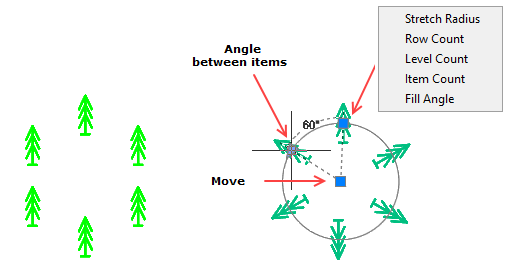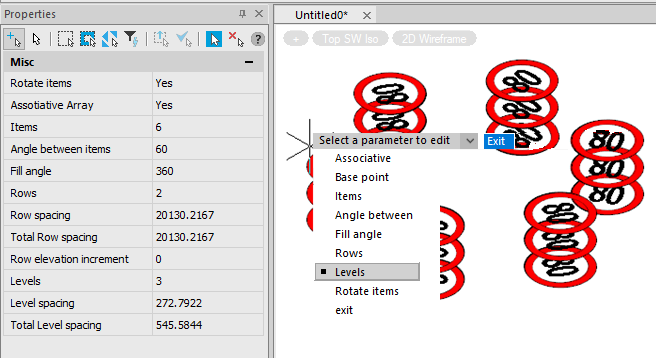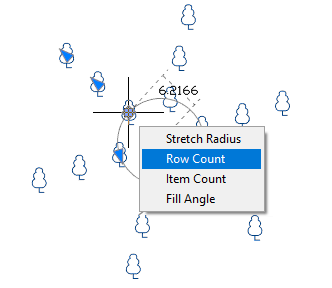-
-
-
-
-
-
-
-
-
-
-
-
-
-
-
-
-
-
-
-
-
-
-
-
Polar Array
-
-
-
-
-
-
-
-
-
-
-
-
-
-
-
-
-
-
-
-
-
-
-
-
-
-
-
Polar Array
 Ribbon: Home - Modify >
Ribbon: Home - Modify >  Polar array
Polar array
 Ribbon: Draw – Modify >
Ribbon: Draw – Modify >  Polar array
Polar array
 Menu: Modify –
Menu: Modify –  Polar array
Polar array
 Command line: ARRAYPOLAR
Command line: ARRAYPOLAR
Even distribution of objects’ copies in a circular array around a center point or rotation axis.
Creating an array:
1. Run the command.
2. Select objects to create an array, press Enter.
3. Specify the array’s central point – the point around which the array elements are distributed. The rotation axis is the Z axis of the current UCS.
From this moment, the screen displays a preview of the array based on the current values of its parameters.
4. Configure the array parameters in the Properties bar, in the command line, context menu or using dynamic input.

Command prompts:
|
Select objects or [?]: |
Selecting objects to be used in an array. The prompt appears if the objects were not preselected before the command starts. Press ENTER upon the selection is completed. |

The command options can be edited in the Properties bar, in the dynamic input menu or in the command line.
note: When specifying values in the dynamic input menu or command line, you should return to the Properties bar to display the actual values on it.
Parameters:
|
Rotate items |
Whether to rotate the elements when creating the array relative to the array’s center point. |
|
Associative |
Whether the array objects are associative or independent. |
|
Base point |
The location of the array's base point. |
|
Items |
The number of items in the array. |
|
Angle between |
Specifies the angle between adjacent elements. |
|
Fill angle |
The angle between the first and last items in the array. |
|
Rows |
Specifies the number of rows in the array. |
|
Row spacing |
Distance between rows. |
|
Total Row spacing |
Specifies the total distance between the start and end row measured from their respective locations on the start and end item. |
|
Row elevation increment |
The value by which the distance between each successive row of items increases or decreases. You can enter numerical values or measure distances on the screen. |
|
Levels |
The number of levels (for creating a 3D array). |
|
Level spacing |
Distance between levels - the difference in Z coordinate values between the levels of objects. |
|
Total Level spacing |
The Z axis distance between the start and end level measured between equivalent points on the first and last level items. |
The array can be edited using grips. When you move the cursor over a grip, a menu with parameters available for changing is displayed.



 De
De  Es
Es  Fr
Fr  Pt
Pt 
